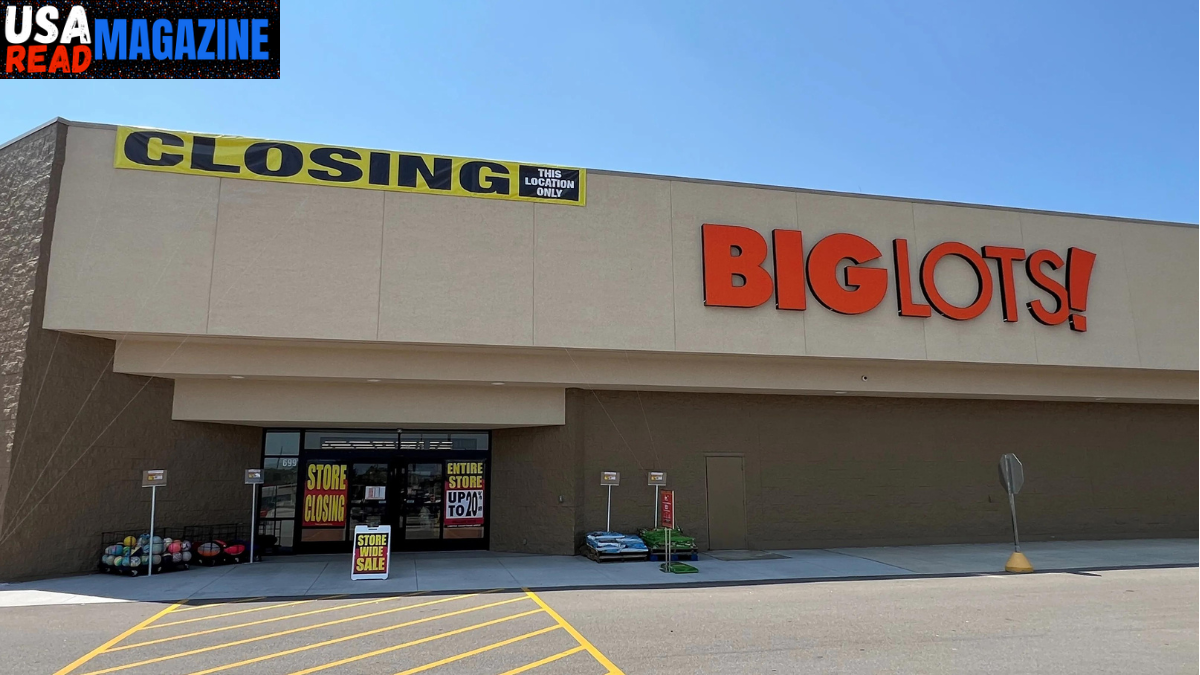Introduction to Big Lots Store Closings
The retail landscape is shifting, and one of the notable changes making headlines lately is the announcement of Big Lots store closings. Once a popular destination for bargain hunters and home goods enthusiasts, these closures signal more than just empty storefronts; they reflect a broader transformation in how we shop. With online shopping becoming increasingly dominant, traditional brick-and-mortar retailers like Big Lots are facing some tough challenges. As we dive deeper into this topic, let’s explore what these store closings mean for consumers, employees, and the future of retail as a whole Big Lots Store Closings.
The Impact of Online Shopping on Retail Stores

Big Lots Store Closings Online shopping has drastically reshaped the retail landscape. Consumers now enjoy the convenience of browsing from their couches, leading to a notable decline in foot traffic at physical stores Big Lots Store Closings.
The allure of 24/7 availability and comprehensive product comparisons is hard to resist. Shoppers can easily find better prices online, putting pressure on traditional retailers Big Lots Store Closings.
Many brick-and-mortar stores need help to keep pace with this trend. They face dwindling sales as customers opt for the ease of delivery over in-store experiences Big Lots Store Closings.
Additionally, e-commerce giants often offer perks like free shipping and hassle-free returns that further entice shoppers away from local options Big Lots Store Closings.
This seismic shift challenges retailers not only to adapt but also to innovate in order to retain customer loyalty amidst changing preferences Big Lots Store Closings.
Other Retail Stores Facing Similar Challenges
Many retailers share the struggles seen at Big Lots. Stores like JCPenney and Sears have faced significant downturns in recent years. Both brands once dominated shopping malls but now sit on the brink of extinction Big Lots Store Closings.
Target and Walmart have adapted well, but even they are not immune to challenges. The rise of e-commerce has forced these giants to rethink strategies constantly. These adjustments often mean closing underperforming locations or investing heavily in online infrastructure Big Lots Store Closings.
Discounters like Kmart also find themselves in a precarious position. Once favorites for budget-conscious shoppers, their decline highlights how quickly consumer preferences can shift Big Lots Store Closings.
Smaller specialty stores face similar hurdles as well. Many have found it challenging to compete against larger chains offering greater convenience and lower prices online.
As we navigate this changing landscape, it’s evident that many retailers must innovate or risk becoming obsolete.
Why Big Lots Might Be Struggling
Big Lots is facing significant challenges in today’s retail environment. One of the main factors contributing to its struggles is fierce competition from both online and brick-and-mortar retailers. As shoppers increasingly turn to e-commerce giants, Big Lots finds it challenging to capture consumer interest.
Additionally, changing consumer preferences plays a crucial role. Many customers now prioritize experiences over material goods, impacting sales for discount retailers like Big Lots that rely heavily on product offerings.
Supply chain issues have also emerged as a hurdle. Delays and rising costs affect inventory availability, making it challenging for the company to meet customer demands efficiently.
Economic pressures such as inflation can deter bargain hunters who might otherwise frequent stores like Big Lots in search of deals. These combined factors create a challenging landscape for the retailer’s survival and growth.
Potential Solutions for Big Lots and Other Struggling Retailers
To navigate the turbulent waters of retail, Big Lots and similar stores could benefit from embracing a multi-channel approach. This means not just focusing on physical locations but enhancing their online presence as well.
Investing in user-friendly e-commerce platforms can attract tech-savvy consumers who prefer shopping from home. Offering seamless integration between online and offline experiences will keep customers engaged.
Furthermore, revamping store layouts to create inviting atmospheres may draw more foot traffic. Engaging staff with training in customer service is essential for creating memorable shopping experiences.
Collaborating with local brands or artists can also differentiate offerings and generate buzz within communities. Innovative marketing strategies that leverage social media trends can capture attention and foster brand loyalty among younger audiences.
The Future of Brick-and-Mortar Stores
As technology continues to advance, brick-and-mortar stores face a pivotal moment. They must reinvent the shopping experience to attract customers who have embraced online convenience.
Experiential retail is gaining traction. Stores are transforming into destination spaces where shoppers can engage with products hands-on and enjoy unique experiences. This shift encourages consumers to visit in person rather than clicking away from their screens.
Additionally, integrating digital elements into physical locations helps bridge the gap between online and offline shopping. Mobile apps that offer in-store navigation or exclusive deals create a seamless journey for shoppers.
Sustainability also plays a vital role in shaping the future of these stores. Eco-friendly practices resonate well with today’s conscious consumers, influencing their purchasing decisions.
As retailers adapt to changing consumer behaviors, they will find new ways to thrive alongside e-commerce giants while fostering community connections and loyalty among local shoppers.
Conclusion: Adapting to the Changing Retail Landscape
The retail landscape is shifting rapidly. As consumers lean more towards online shopping, traditional stores like Big Lots must adapt or risk becoming obsolete. The rise of e-commerce has reshaped the way people shop, making convenience a top priority. This trend poses significant challenges not just for Big Lots but for many brick-and-mortar retailers.
Big Lots is not alone in its struggles; numerous retailers are feeling the pressure to innovate and engage customers in new ways. Some have turned to enhanced customer experiences or omnichannel strategies that blend online and offline shopping seamlessly.
For Big Lots specifically, embracing technology might be essential. Improving their online presence while refining the in-store experience could attract shoppers back into physical locations. Amplifying community engagement through local events also helps bridge that gap between traditional retail and modern consumer habits.
As we look ahead, brick-and-mortar stores face a pivotal moment. Their survival depends on adaptability—finding ways to meet evolving consumer expectations while enriching their unique value propositions.
Retailers have an opportunity to redefine themselves amidst these changes by focusing on what makes them unique: personalized service, memorable shopping experiences, and community connection. Embracing this shift will determine whether they thrive or falter in this changing landscape marked by big lots of store closings and ongoing transformation throughout the industry.




